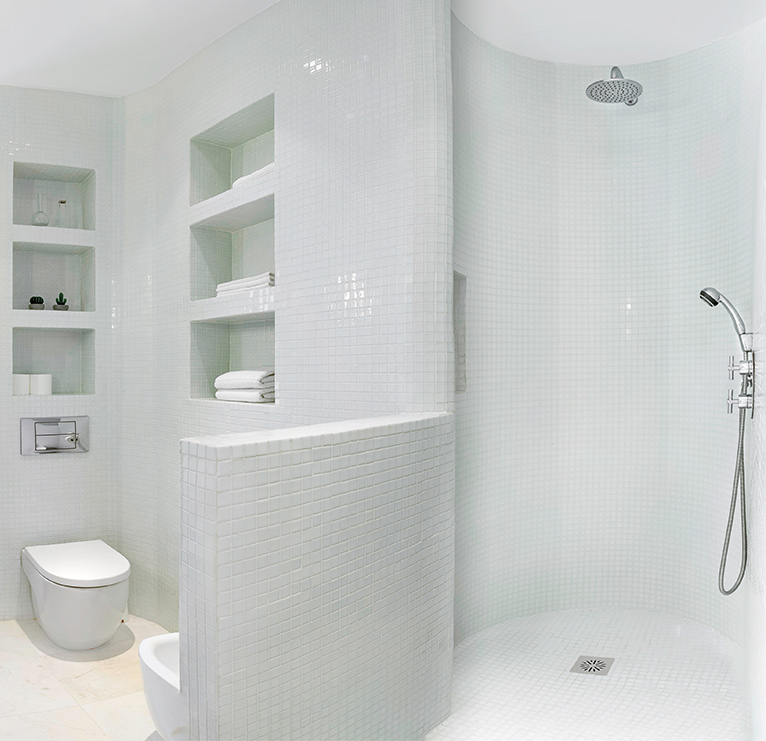The pros and cons of walk-in showers
Sleek, luxurious and modern – three words that come to mind when you think of a walk-in shower, right? Although they’re normally found in posh hotels and spas, walk-in showers are quickly becoming a popular bathroom choice for British homeowners.
If you’re wondering whether a walk-in shower is right for you, we’ve put together some of the key advantages and disadvantages that you should consider.
Pro: There’s a range of layout options

A walk-in shower is a modern style of shower with no doors and a low tray, so you can simply walk in. Some walk-in showers are partially closed off with a wall or panel of glass, but others work a bit like a wet room and are completely open.
There are three main options to choose from:
- Recessed: Ideal for replacing a bath, a recessed walk-in shower fits into an alcove.
- Corner: Fits into any corner of the bathroom, featuring two glass screens to close it in.
- Floating: With a single glass panel, this type allows walk-through entry from either side.
Con: They can be draughty

In a walk-in shower without an enclosure, the humidity from the shower circulates around the bathroom. This can make the room feel cold, especially if your bathroom is chilly or you feel the cold easily.
There are a few ways to get around this, though. A radiator is a classic solution, or a glass-walled enclosure will trap heat and steam. Underfloor heating or ThermaSkirt will also warm up cold tiles, as well as adding an extra touch of luxury.
Pro: Improved accessibility

Specially adapted showers reduce the risk of slips, trips and falls. Features such as grab rails and slip-resistant floors also provide extra support for people with limited mobility or disabilities. The doorless and potentially step-free space allow for a seat to be installed, too.
Con: Water can build up

Because there’s no bath or stall to catch the water, any excess could be splashed around the bathroom. However, if designed correctly, the floor of your walk-in shower should slope slightly towards the drain so that this doesn’t happen. A curb can also help with this.
Pro: They visually enlarge a bathroom

The bathroom is often one of the smallest rooms in a house. Whilst walk-in showers are extremely compact, they help to keep the room open. They work well with awkward room layouts, too – the recessed and corner styles tuck neatly into an alcove or eave, using the existing walls as natural partitions.
Con: There’s a higher cost

A walk-in shower tends to be a bit pricier than a traditional shower, usually because of the high-quality glass and specialist drainage systems needed. They’re worth it in the long run if you’re dreaming of adding an ensuite, doing a luxurious bathroom revamp or simply refitting a small shower room.
Pro: Cleaning them is quick and easy

Mouldy shower curtains are a thing of the past when you have a walk-in shower! They form one seamless design, so there are less nooks and crannies to clean compared with a normal shower.
Pro: They’re better for the environment

Replacing a bath with a shower is usually better for the environment, whilst also helping to reduce energy and water bills. According to The Guardian, the average eight-minute shower uses 62 litres of hot water compared to 80 litres for the average bath.
Decided to go ahead with your bathroom makeover? A bathroom fitter can help you design a bespoke walk-in shower, or advise what will work best for your space.



